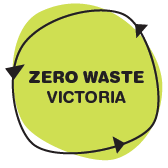“The design is the thing that really gives a product the ability to last.”
“We are constantly trying to imagine other ways to use all and everything that we have.“
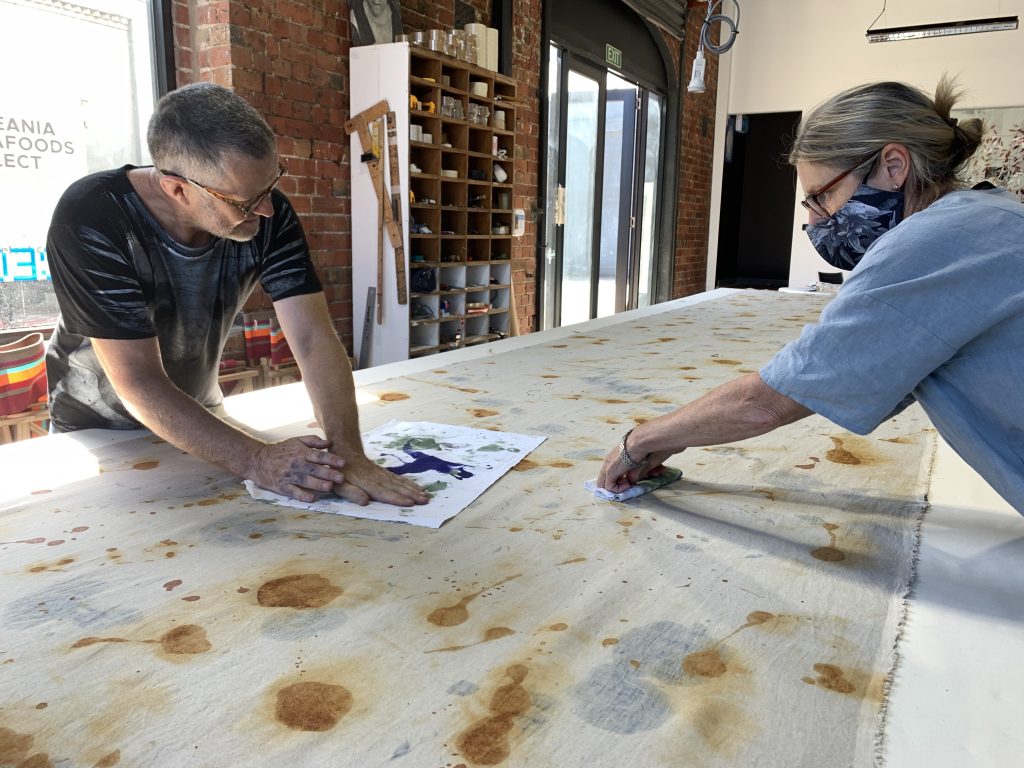
Our latest Zero Waste Champion feature brings the stories and values we hold into everyday art and design…with waste being designed out or through innovative ideation is utilised. We spoke to Stuart from Spacecraft Studio, who shows us with some creativity, waste can be reimagined…
Emily (ZWV): Congratulations on your new space in Footscray. It’s very exciting moving from your Fitzroy home for many years. Can you share a little bit about your story of how Spacecraft Studio came to be?
Stuart (Spacecraft Studio): We moved from London in 2000 and I’d been running a place called London Printworks for contemporary art essentially but we set up a print studio or I took over as director, six years previously but they set up around textile printing tables and for artists as a bit of a gap and so we attracted artists but we also tried to design people and so it became this mix of artists and designers. It was interesting and I had planned to do something similar in Melbourne and had met a lot of people from Melbourne but the public funding / funding regimes for arts was very different in Melbourne. So didn’t feel that we could use the London Printworks model in Melbourne so we set up our company as a business rather than a not-for-profit and that was the beginning of it but similar motivations to work with artists and designers in the same space and also a vehicle for my own art practice to continue. And from there lots of twists and turns along the road but essentially it’s kind of maintained that sort of idea you know somewhere to create high quality contemporary art projects um and they are either for exhibition art sort of community purposes or an art for collaborating with commercial architects and originally with fashion designers too and that kind of has continued throughout. So we work with fellow artists either visiting Melbourne or local artists and increasingly we work more with architects and also some fashion design.
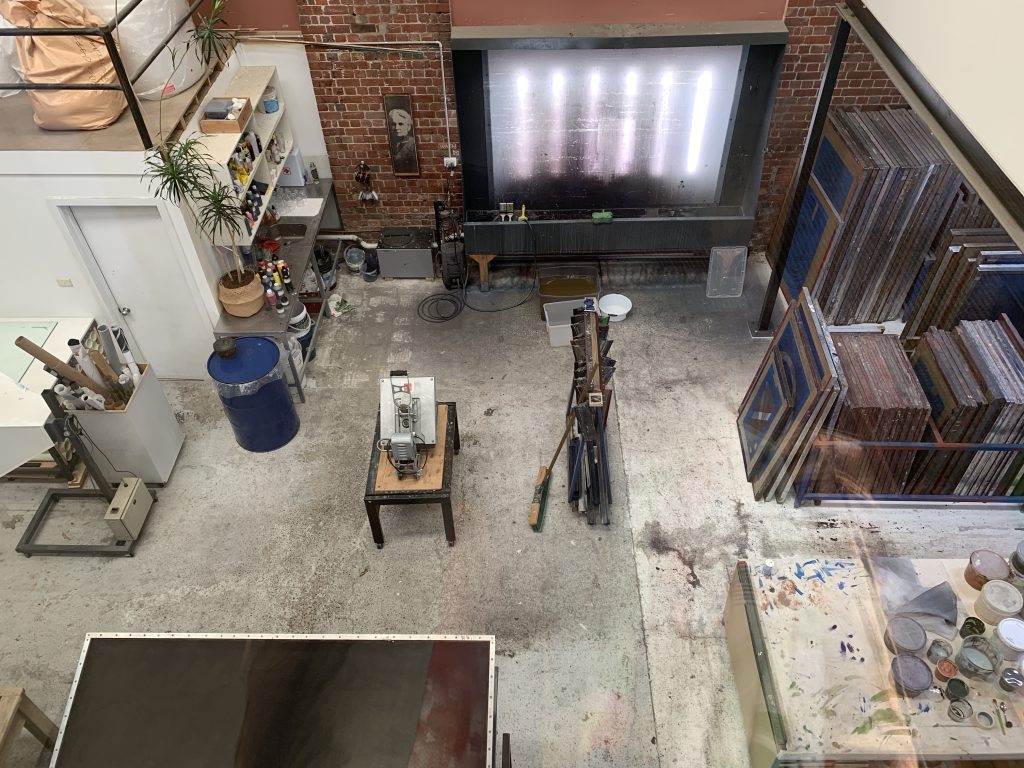
That’s really cool and we’ve connected through our mutual buddy Joost Bakker – just wondering how did you connect with Joost and what’s your story there with zero waste?
Originally when we arrived in Melbourne we developed friendship groups in the art community that we knew either from people we that we already knew in the UK or in London and Scotland that we knew, which you sort of gravitate often when you start off anyway. A fellow Scots artist called David Band was a mutual friend of Joost and I had noticed him around out and about in town and about. He started buying my t-shirts – I used to make a collection of t-shirts that we sold through um a store called Kyodo in town that was kind of an icon and Joost bought t-shirts and always really wore them well so I kind of noticed that and we became friends and started doing projects together.
We kind of continued with Joost and the projects done with him for zero waste. Like Greenhouse in Sydney for example where he throws you sort of opportunities are supposed to come up with ideas but the idea there was to create some their staff uniforms or shirts. I bought old t-shirts that already had slogans or writing or graphics on the front and that I just smashed Joost’s slogans on top of the existing shirts and then we did some other little applications of design to the shirts but that was the essential aspect of it that we printed over the top of another shirt with those big bold graphic texts that Joost creates, typographies.
So that was a continuation of a project that I’d done where I was collecting and worked with op shop collection people to find a type of like a short sleeve this business shirt essentially and we’d identified the labels that we were interested in and then the sourcing of through the op shop connections and I reprinted them and put them back into high-end fashion store, in this case predominantly in another Melbourne icon of a shop called Husk that sells fashioned and in those days than at three or four outlets. That was might have been 2004 or something you know so it was quite early but not as well received and so that those sort of ideas existed and then you could apply them to projects like Joost or other people that were working in that space.
With waste, once you start to look…I think in the sense for Australia, the design is the key. That sort of the area that still needs to be understood better. A good example is we were creating some seats so we were we turned our hand to a lot of different things but we were making some seats for a bank project that was building that was the green star rating. Aiming for the highest possible green star rating and everything was being assessed for its environmental, how it was made and so we made the seat and sent the seat off to be assessed and obviously we’d kind of it was going to come back with a high mark but the way that they rated it or the way that they valued the different component parts was all about the materials and some about how you’d constructed something. So using screws rather than glues obviously using materials like plywood that didn’t have formaldehyde and all of those types of things that were quite well known.
I understood ways to design but the seats came back with a very high rating but the thing that occurred to me when I was looking at all these different ways of assessing a product was that they didn’t or weren’t able to include the design in their assessment. For me, the design is the thing that really gives a product the ability to last. Joost tells good stories about wearing my t-shirts till they wear out and other people do too. So I meet people in the street who say that their partner has thrown out the t-shirt three times and they pull it out of the bin because they can still wear it with a cardigan.
I think well that’s what it’s kind of all about is how many wears that you get out of the shirt and so if the design is what creates that that statistic or the design helps you to keep it. You know all the shirts in your own wardrobe, the things that you keep and the things that don’t last as long. So that seemed to be an omission – it’s probably 80 percent of what’s going to keep you using the product is the design aspect and yet the way that we assess it is just on whether it’s got formaldehyde in the wood or whether it’s got screws or whatever. There’s a PhD in there somewhere, on how you include design in that assessment process and obviously that’s subjective and going to be quite difficult but I’d say you know it’s a huge percentage of and also for Australia, I think it’s important that we would be served as a design leading community. That’s something in terms of that underpins the longitude towards the design and waste or longevity and the other one is waste itself.
So we have a lot of projects that have tried to not minimise so much but to use every aspect of what we print so famously those backing cloths that cover the print tables that kind of become artworks is something that’s been well documented and continues as a kind of experiment today, and still very popular. We are constantly trying to imagine other ways to use all and everything that we have. Patchwork is a really good one and a traditional way of using waste product and there’s great examples in Australia of that, particularly from the 1930s, how they used patchwork. So that’s something that we’re very involved in.
The other one for waste that’s more recent in a specific project that we’re doing at the moment, is where we’re using waste materials to create pigments. So looking at all the things that you’re buying and that’s one of the ones that quite hard. The pigments in the colour, something that you don’t think about too much, or I didn’t until a bit more recently – how you could incorporate waste into that process.
So I’ve used iron powders and other materials to create pigments for a very long time but I came back to it again recently with a project with Fiona Lynch, which is for the new Ace Hotel in Sydney, where she had an idea that we could collect materials from the site before the building was built. We would use those materials to create the colours for the textiles and that’s in my area – mineral pigments is something that I’m really interested in. So we turned the bricks and concrete and iron bits of metal and used those all to create pigments and to print these textiles which be a nice hotel coming up.
For Melbourne Design Week, Fiona Lynch is presenting that work I think maybe in association with Ace Hotel but at Villa Alba Kew, that should be should be really interesting. It’ll be worth having a look at and might forward or further develop our ideas about how to use waste materials and pigment production, particularly bricks.
We’ve been working with a recycled brick company in Melbourne with Joost on that as well. We’ve created the new flag for Rough Rice that was made with bricks, powdered brick.
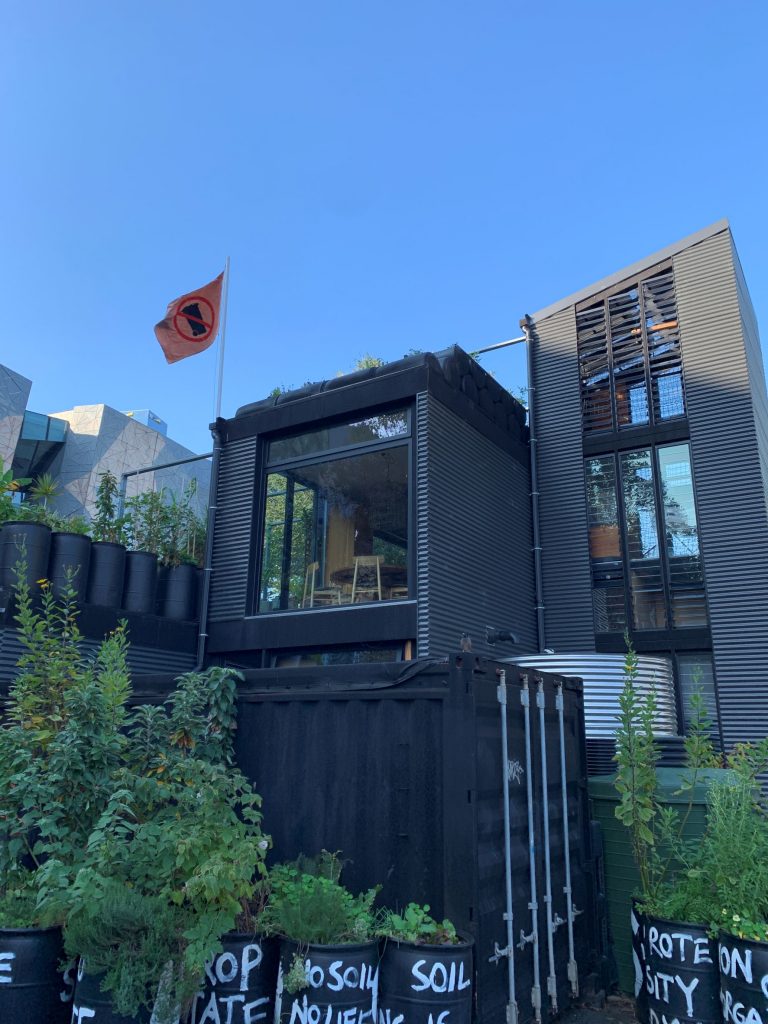
Yes, and the material from the flag as well and how you’ve sourced that, that was really interesting too…
Yeah, that’s often connecting stories with things. Lke the shirts that have had a previous life where that’s been around more you know selecting the material that you print onto or make art with has so those materials bring with them stories and histories – we like to use them. So the pigments have been more recent but the flag is made from an old damask tablecloth and like the first one, that was stolen, the damask table cloth just references the interesting history, in cooking and that seemed to be a big part of what the his most recent project Federation Square – chefs, which is always about some sort of cooking really and sitting around a table so the idea of making it from a damask tablecloth seemed to be very interesting.
Then for Adam Rice’s residency, we made a flag for him that would be showing that he was in residence and that was the one made with the bricks and it was on to a design was a Chinese design called the ‘willow pattern’ that’s very famous and we’d understood or had thought that the fermentation which is what Adam’s specialist areas was developed in China and so it has more stories if you want to go in deeper into it all but you can kind of see you can sort of see the damask. It’s subtle but even when the flag’s flying you can see that it has this kind of damask pattern across it. It’s super cool to see it up there.
Are there any other sort of interesting highlights or projects or epic failures or something you’d like to share?
Well Joost has obviously been a big inspiration and the things that he does help us to kind of imagine, not just as a vehicle through these greenhouse projects we’ve done a lot of things for them over the years, but also just in terms of what he’s doing is a kind of a constant I love as an art project, I think that the Future Food System is just one of the best artworks that Melbourne’s made for a long time. So you feel that it’s kind of quite proud to be or pleased that he’s able to get things like that done in Melbourne. It gives you confidence that if you try hard enough you’ll be able to make things happen too.
There’s other people that have helped with thinking this project, Fiona Lynch obviously fits other people who are thinking in these ways. Andrea Wilson, an architect at ARM Architects really helps us [navigate] the regulatory demands of working in commercial architecture as often you get pushed in certain directions and for instance recently towards using polyester and that’s what the specifications kind of lead people towards, but we find other ways to comply with those regulations and hang on to use of natural materials etc. It’s a bit of a minefield and she’s just fantastic at this. Her background is as an artist and an architect so we kind of connect very easily too.
Jesse Judd at ARM is really good at that too trying to enable us to hang on to the core production values and materials link to the concepts and ideas that we have. In the way that you understand that the tablecloth contributes to the concepts and ideas that we would like our materials to do that, in the way we want our commercial architect projects to as well but it can be quite hard so their support has been really helpful to us over the years.
We probably need a bit more technical support for that type of production – if there’s anyone out there that’s interested in helping us develop mineral pigments from waste that would be very cool either as collaborators or just people who have some technical skills as artists. We’re kind of quite good at doing a bit of everything but we’re not really scientists, so you know that aspect of things. We have had help over the years, certainly lots of people that we speak to – chemical engineers and others – that have helped us along the way.
It sounds like there’s lots of exploration and just curiosity in what you can use in experimentation through the processes and by connecting with other people who are along similar journeys or inspiring each other and to go to the next level try something new.
I think it’s when you find something that people connect with – how do you then it’s easy to do that in an art context as a one-off but how might you introduce that as something that we could do that would become more mainstream. For example, something that we consider would be scaling up of something that’s been created in a pestle and mortar into something that uses a ball mill – that upscaling of these kinds of concepts that work as art and seeing how they might be able to flow through into more of the everyday design.
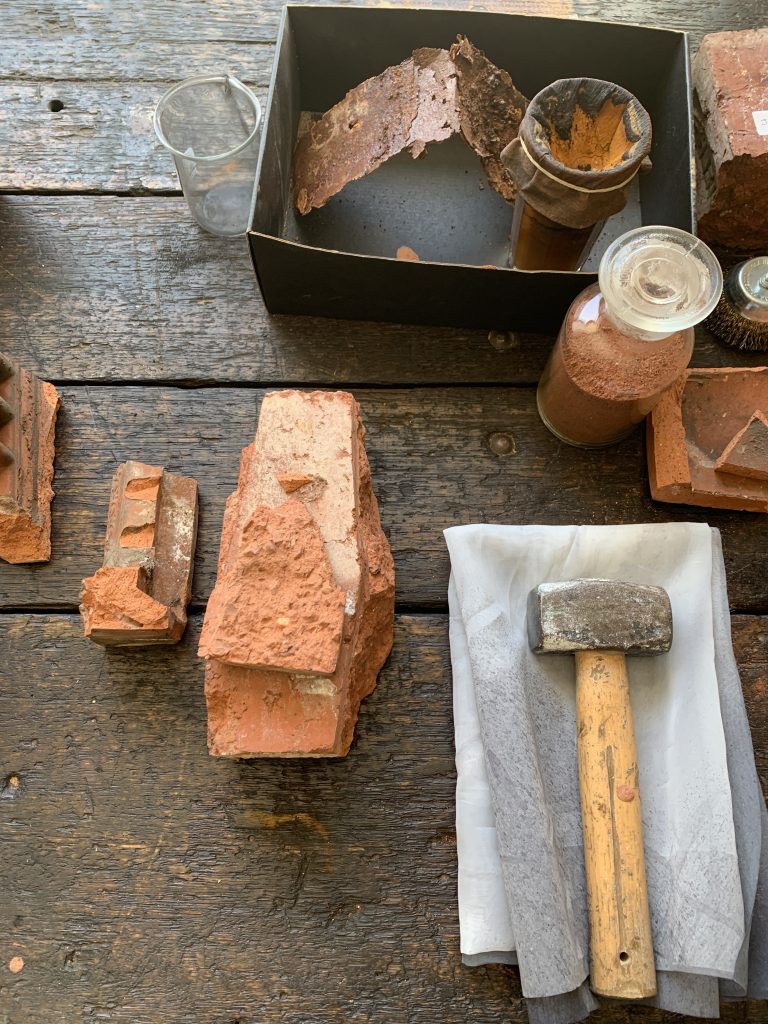
Fantastic, what are your top tips for reducing waste – in the art/design space to everyday life?
Using everything, I’d say is what and how we try to do. We keep imagining different ways to use every scrap of material that we use – that comes all the way down to those 10 cm squares in the patchworks.
I think the most important thing, it seems to be consistent in every area. People in food industry talk about using everything. Like your bins, we’re not able to go no bins like Joost, which is remarkable, but we try to see value in everything that we have and try to imagine ways that we can design with it. People have imagined that, particularly in tough times previously. If you look, we find a lot of inspiration from people who’ve designed in tough times. The 1930s being a good example, in the west anyway. It’s the Indigenous cultures and how they use materials and how they didn’t have waste or no concept of a waste material is very important to us.
We work with a lot of Indigenous institutions and art centres and are constantly reminded of that through their practices and attitude to design.
That’s something we’re hopefully shifting towards when looking at solutions. Nature has no waste and we’ve just got to take on that philosophy that we can’t continue to produce things and how Joost says ‘imagine a world without waste’. That’s how we need to design things. That’s how we need to live and that’s our mindset. Something First Nations people have done since time immemorial.
As well as using everything that you’ve got but that finding things locally too. That’s some of the inspiration that we take from we’re working with Indigenous arts centre in West Arnhem land at the moment. We’re setting up a print studio a textile printing studio but hoping to return to using the pigments locally found pigment rather than pigments from Switzerland or wherever they’re coming from. So that’s very much in line with where they’re driving us towards those ideas and we’re happy to follow those lines of inquiry. Finding things local is critical as well.
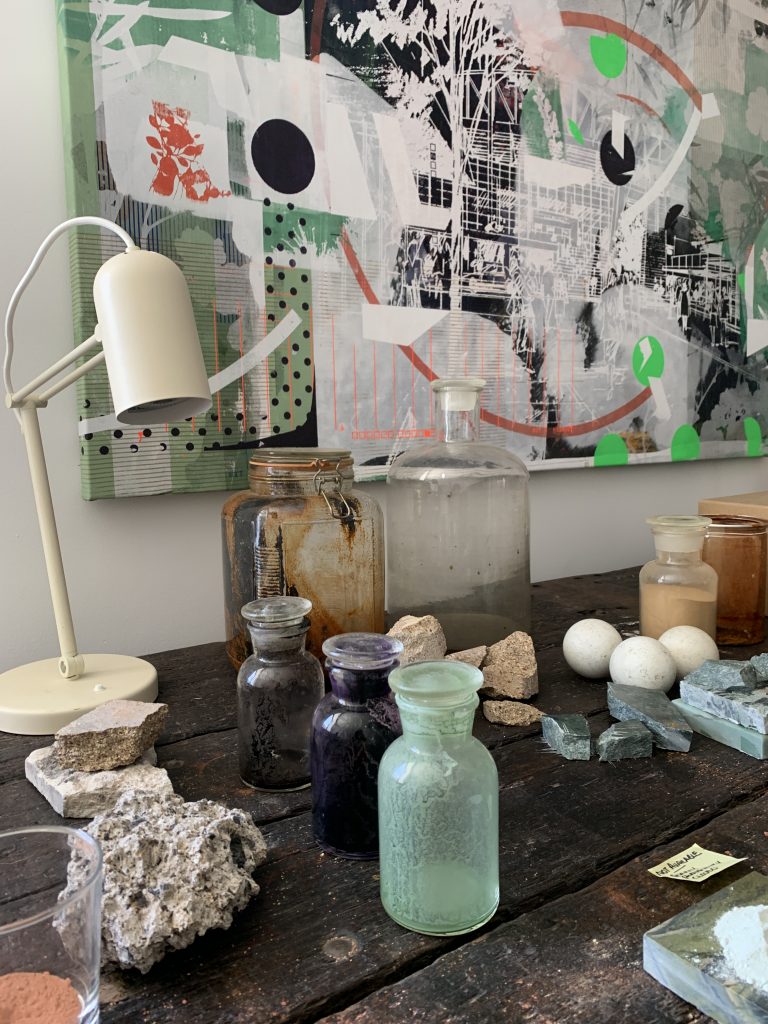
Excellent, it’s definitely very cool what you’ve been doing with Cassie as well!
We started working with Cassie Leatham (Taungurung/Dja Dja Wurrung artist and designer of Wild Blak Arts) for a project with ARM Architects, with charcoal and having campfires and making pigments from charcoal that were generated around a campfire. It’s something we’ve done in a number of times as a device or a way of framing the project…for people to contribute to the project around a campfire by inviting people to join us in those conversations but the one of the interesting things is that we hang on to that charcoal and we make a pigment from it, so the final artwork is made from a pigment created from the campfire. So in some sense, it represents everybody that witnessed those conversations in the first place. This is a social housing project and Cassie has a background in social work and she has a social enterprises. So we met up with people who had lived experience of social housing around this campfire and people who are involved in the provision of social housing. Those conversations are in some way now recorded through the pigment that we’ve created through the charcoal. That’s a project we’re doing, a continuing project, and we’ve used that curatorial kind of device for a number of projects but the most recent one is this ARM Architects project for social housing in Bellfield and in North Melbourne.
It’s really incredible the weaving of like the stories within the work within the design and it creates that value in the resource as well because the stories are attached and everything is so interconnected and interwoven.
There’s that entity that connects with some ways, or Australia for us anyway, in terms of what that materiality and production values are, all kind of tied in together. So that the stories about how something would be made would include the materials that you’ve made it with – I think that’s a given when you look at indigenous artworks and first nations artworks, that they tend to do that. The type of pandanus leaves that you collect and how you make the dyes from which materials etc. are all part of the story. It’s not just something that comes in a tin and you open the tin and use it and you don’t know where it was made or it’s been made in multiple countries and it’s very hard to use that as part of the story, whereas with first nations artworks that is always part of the story so that’s an influence for us.
Thank you so much Stuart for sharing so much with the stories and your incredible work that you’re doing in this space. We definitely need more people like you to really think outside the box, connect people and dream up new ideas and innovate things.
– – –
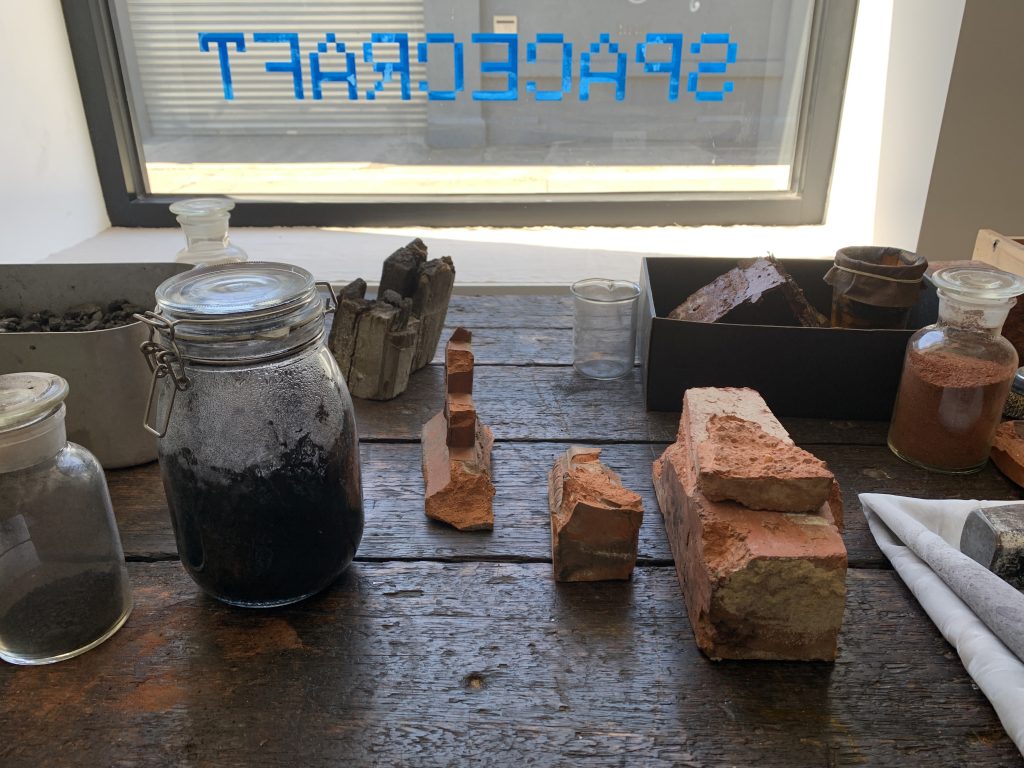
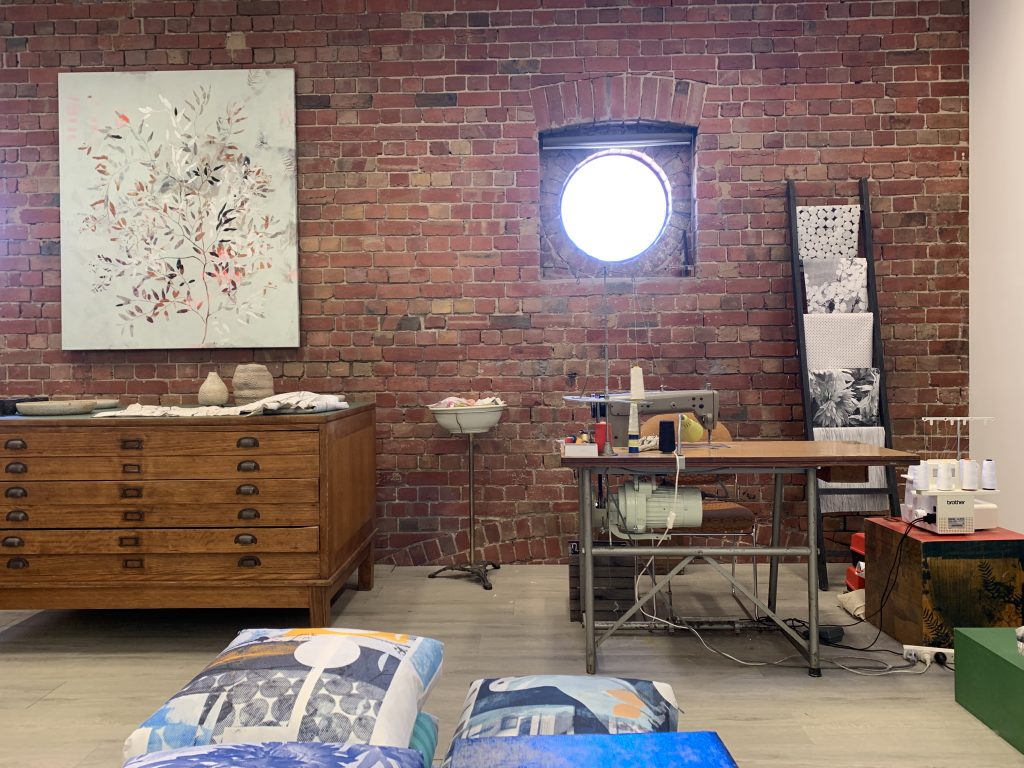
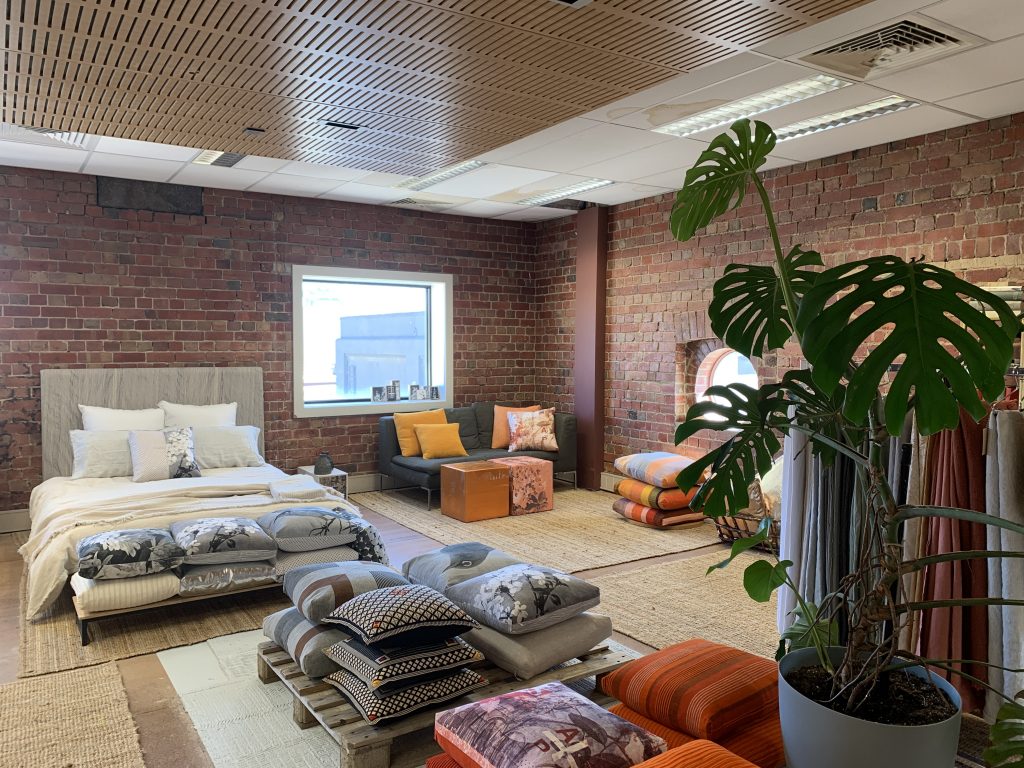
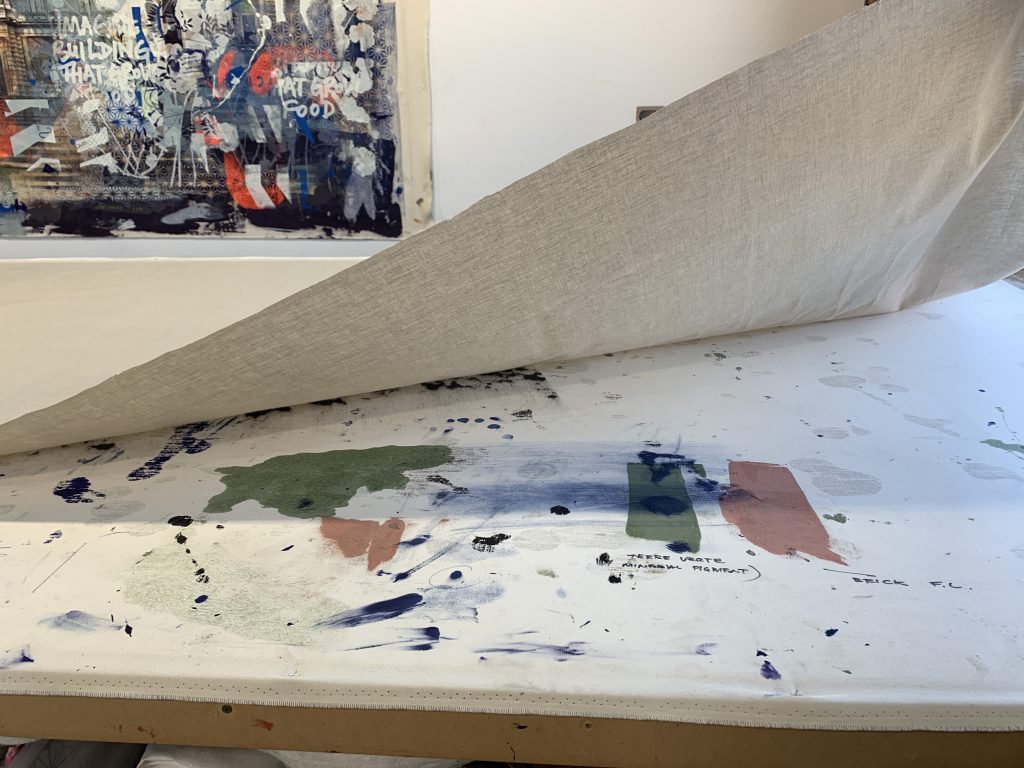
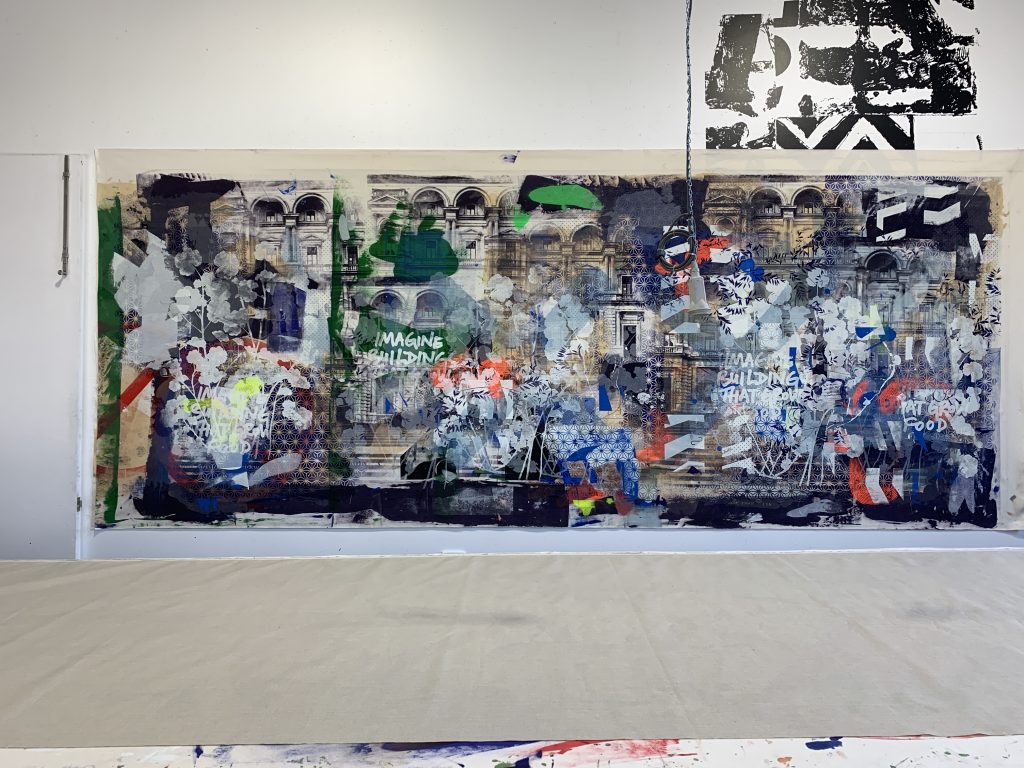
Connect with artist Stewart Russell and designer Donna O’Brien via their website Spacecraft Studio, on Instagram @spacecraft_store and on Facebook @spacecraftaustralia. There will be an upcoming exhibition later this year – so keep your eyes and ears open for that.
